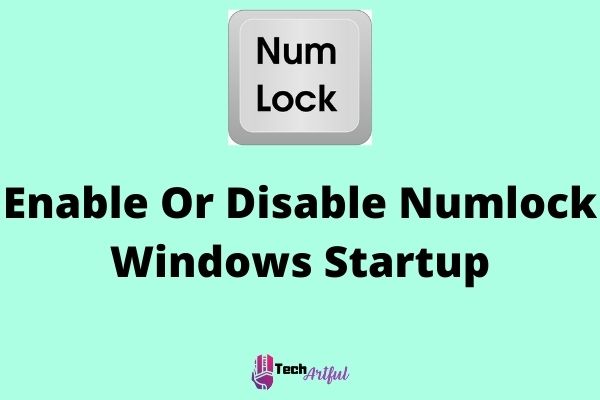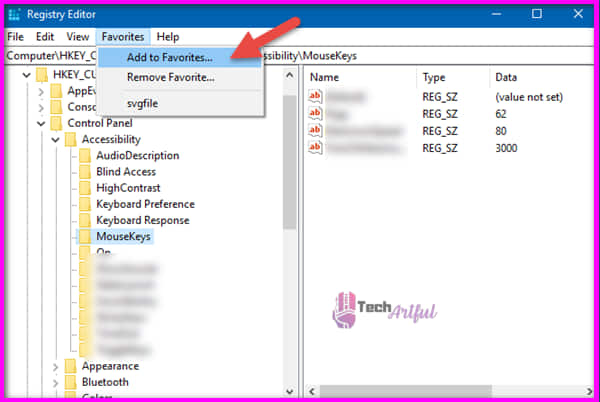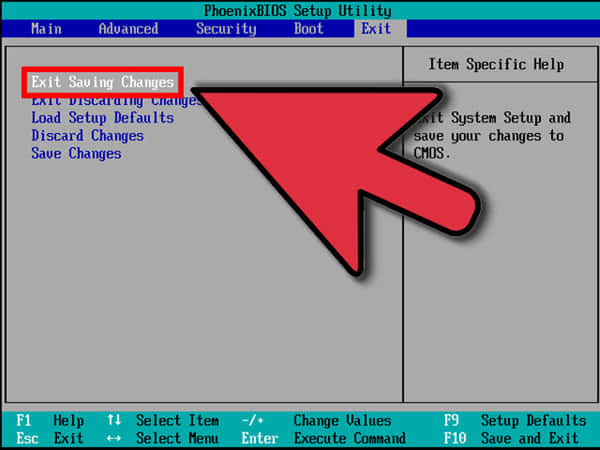If you want to enable or disable numlock at Windows startup on your PC then this guide will help you a lot.
Many Windows users prefer that the Numlock function of their keyboard is automatically activated when they switch on their computer, which is a widely used preference among computer users.
While this option is not available through the Control Panel, it is possible to get the same result by changing the Windows registry.
People who have difficulties with the automatic disabling and enabling of the Numlock function in Windows can have the process forced to be enabled or disabled every time the operating system is started.
It is useful for people who are having difficulties with the automatic disabling and nurturing of the function. It is possible to gain access to this function using the Control Panel.
The Registry Editors must be modified to achieve this, and specific modifications must be made to them. Remember to always back up your data before changing your computer’s settings using the Registry Editor. Be on the safe side before changing anything on your computer. In this article, you will find different ways to enable or disable Numlock on Windows startups.
Disable Fast Startup
You can disable a Windows feature known as Fast Startup by employing one of the methods detailed in the following section. Also known as Hybrid Boot, this feature makes use of your computer’s sleep or hibernation state to make it simpler and faster for your system to boot up more quickly and effectively.
If you want your customized Numlock settings to continue functioning after your computer restarts, you must disable this capability in Windows.
- To obtain access to the Control Panel, start your computer by pressing the Start button on the keyboard. You may access Control Panel by hitting the Windows key+X on your keyboard and then selecting Control Panel from the Power User Tasks Menu located on the right-hand side of the Windows screen on the other hand.
- You might be able to locate what you’re searching for by selecting Hardware and Sound from the drop-down menu.
- On the left side of the screen, there is a drop-down menu that contains Power Options.
- Click Power buttons can be programmed to do specific functions according to your preferences.
- You can access options that are not presently available by visiting the Define power buttons portion of the configuration wizard.
- Ensure that the box next to the option labeled Turn on quick startup is not checked in the Shutdown settings section (recommended).
- You may save your modifications by selecting Save modifications from the drop-down menu.
Configure Registry Editor On Windows 10
Numlock must be enabled when the computer is first booted up for it to function correctly. To accomplish this, you must make changes to the Windows registry, detailed in further detail below. To learn how to access the Registry Editor, go to the sections below:
- Hit the Windows key and the R key on your keyboard together at the same time to bring up the Run window on your computer screen.
- By typing regedit and clicking the Enter key on the keyboard. If you choose Yes from the drop-down selection when the User Account Control dialogue box appears, you will be sent to the confirmation screen.
- Proceed with utmost caution while making changes to your computer’s registry since making a mistake might cause other functions on your computer to cease functioning correctly. You should create a backup of your registry before proceeding with this step since it is highly advised. A copy of your registry may be made by selecting File, then navigating to Export and exporting it to your computer from inside the Registry Editor window.
- Give the backup file a descriptive name and provide an appropriate place for it (for example, your desktop) and a descriptive name. It is possible to restore your registry settings with the help of This. Reg file if you ever find yourself in a situation where this is necessary. Double-click this. Reg to have your registry settings returned to the state they were in before they were saved.
- Once you have done that, browse to the location given below in the Registry Editor. The HKEY CURRENT USER Control Panel is accessible via the keyboard. The registry item InitialKeyboardIndicators, which is what you’re looking for, can be found on the right-hand side of the screen.
- InitialKeyboardIndicators was an entry I discovered in the Windows 10 Registry Editor, which I then changed.
- The value of the InitialKeyboardIndicators variable determines whether Numlock is enabled as soon as your computer is powered. In this case, 0 indicates that Numlock is turned off at startup, whereas two means that Numlock is switched on at startup (Numlock is turned on at startup). Once the data value data in the InitialKeyboardIndicators section is set to 2 and the OK button is clicked, the InitialKeyboardIndicators will be active every time the computer is launched.
- If you have several user entries in your registry, you will need to repeat this step for each of the user entries in your registry (sadly, you will have to do it manually for each one). If you search for user accounts with the suffix S-1- in your HKEY USERS registry section, it is conceivable that you may find other user accounts with the suffix S-1-. Change the value for each of the InitialKeyboardIndicators in the Control Panel Keyboard InitialKeyboardIndicators section to 2.
Clients who do not already have the InitialKeyboardIndicators item in their Control Panel will not need to make any modifications.
Configure Numlock BIOS
It is recommended that you check your BIOS configuration to see if you have any more choices for controlling your Numlock’s operation if you desire to have greater control over how it functions.
Look through any packaging you received with the computer or motherboard you purchased to see which BIOS settings are appropriate to your computer or motherboard.
Use PowerShell Script
Use the following PowerShell code to enable or disable Numlock on Windows startup:
Numlock enabled:
InitialKeyboardIndicators is set to 2 by using the Set-ItemProperty command with the path Registry::HKU.DEFAULTControl PanelKeyboard and the name InitialKeyboardIndicators as the value.
Numlock disabled:
Set-ItemProperty -Path Registry::HKU.DEFAULTControl PanelKeyboard -Name InitialKeyboardIndicators -Value 0 To disable Num Lock, use the following command: Set-ItemProperty -Path Registry::HKU.DEFAULTControl PanelKeyboard -Name InitialKeyboardIndicators –
Fix For Older Versions Of Windows
The following steps must be completed if you are using a previous version of Windows, such as Windows 8, Windows 7, or Windows Vista:
- To open the Run window, hit the Windows key and the R key on your keyboard simultaneously on your keyboard.
- The Windows Registry Editor may be accessed by typing regedit into the Open text box and pressing the Enter key to open it. Whenever a User Account Control dialogue box occurs, the Yes button will be shown. To proceed, click on it.
- Navigate to the following in the registry to complete the process: Keyboard for the HKEY CURRENT USER Control Panel.
- By double-clicking on the InitialKeyboardIndicators button on the right, you may access it. Change the value data to 0 (Numlock is turned off when the computer starts) or 2 (Numlock is turned on when the computer begins) (Numlock on when the computer starts).
Use Startup Or Login Script
It is possible to automatically enable the Num Lock on Windows starting with a system administrator and run a logon script on the PC you are administering. To accomplish this, there is no specific Group Policy setting that can be utilized. Instead, the following should be used:
- Please copy and paste the following into a document, saving it as numlock.VBS, using Notepad as your editor:
- WshShell should be assigned to the value CreateObject (WScript.Shell)
- WshShell sends the command NUMLOCK.
- Alternatively, you may select one of the following options:
- Place the numlock.VBS file in the Startup folder of the machine or user that you want to target with the num lock function.
To execute the script using Group Policy, follow the procedures below :
- VBS should be copied and saved in one of the following directories:
- It is written as follows: percent SystemRoot percent System32 GroupPolicy User Machine Scripts Login where percent SystemRoot percent System32 GroupPolicy User Computer Scripts Login is the path to the logon script a local computer.
- Scripts for the domain login path = percent SysVolFolder percent Sysvol percent Scripts Scripts for the domain login path = percent SysVolFolder percent Sysvol percent Scripts Scripts for the domain login path = percent SysVolFolder percent Scripts.
- To open the Windows Run dialog box, press and hold down the Windows Key while hitting the letter R on your keyboard.
- After you have typed MMC, hit the Enter key.
- To add or remove a snap-in, go to File next click Add/Remove Snap-in and Add/Remove Snap-in. The options are Add then Group Policy.
- By selecting Browse, you will be able to search for the GPO that you wish to use. The default computer is the one that is currently connected.
- To complete the procedure, select Finish, then Close and click OK to close the window.
- From within the Group Policy Management snap-in, navigate to User Configuration or Computer Configuration and then click Windows Settings and navigate to Scripts to find the scripts you need.
- Logon script should be selected by double-clicking it, selecting Add the click Browse, and selecting numlock.VBS from the drop-down menu.
- Click on Open and then OK in the drop-down menu to proceed.
- Please keep in mind that the num lock.VBS script will only replicate the action of pressing the Num Lock key on a single computer keyboard. It will modify the value to something ris opposed to what it is now set to by default. However, even though the Registry technique is often preferred, this method might be beneficial when you’re stranded in an unfamiliar location.
After trying these methods, hopefully, now you can disable or enable numlock function properly on your Windows Startup.
FAQ
How do I enable Num Lock?
Select one of the sub-options under NumLock from the menu. Select Always On to keep on Num Lock.
How to enable Windows number lock?
To use num lock, press Fn+F8, F7, or Insert.



